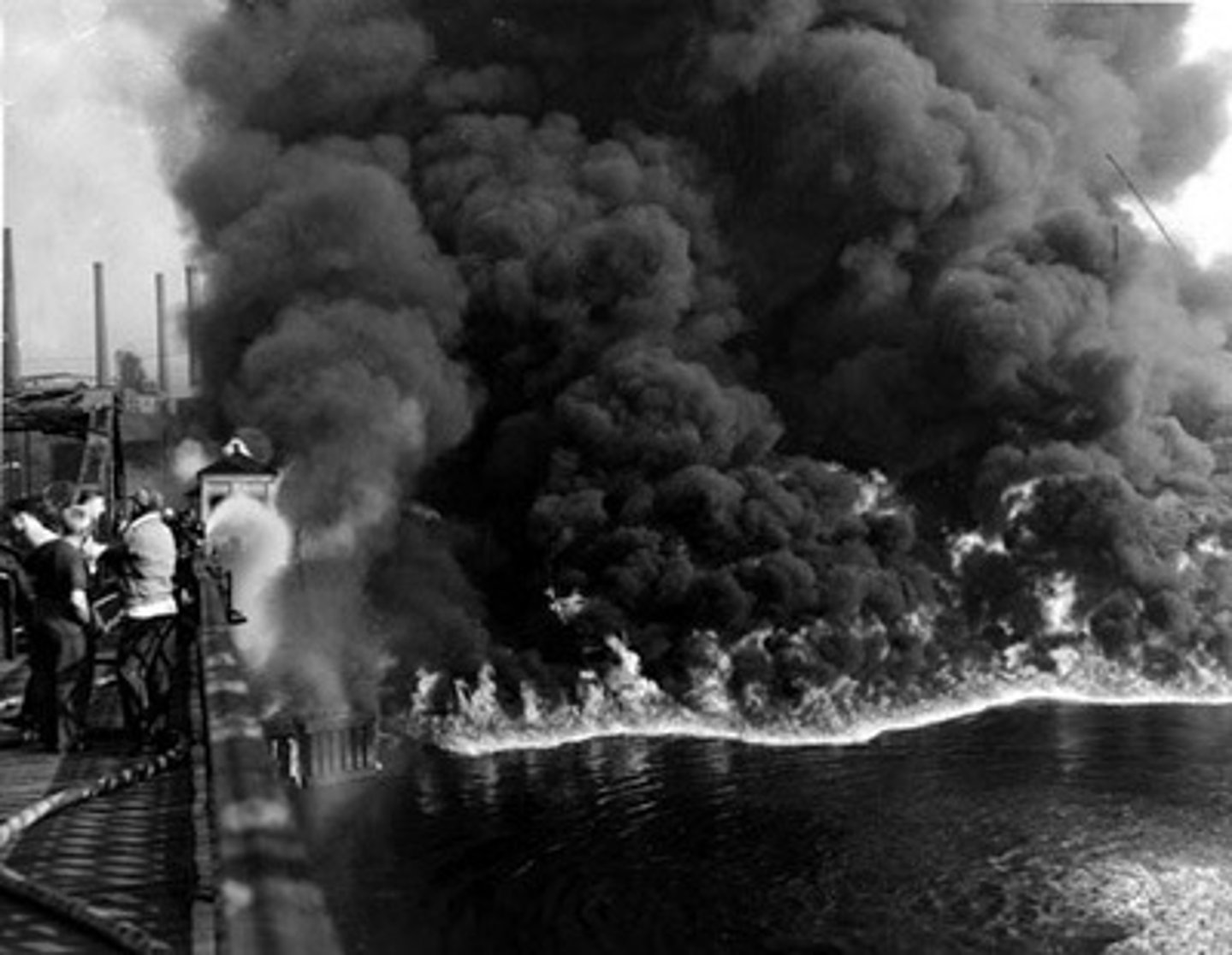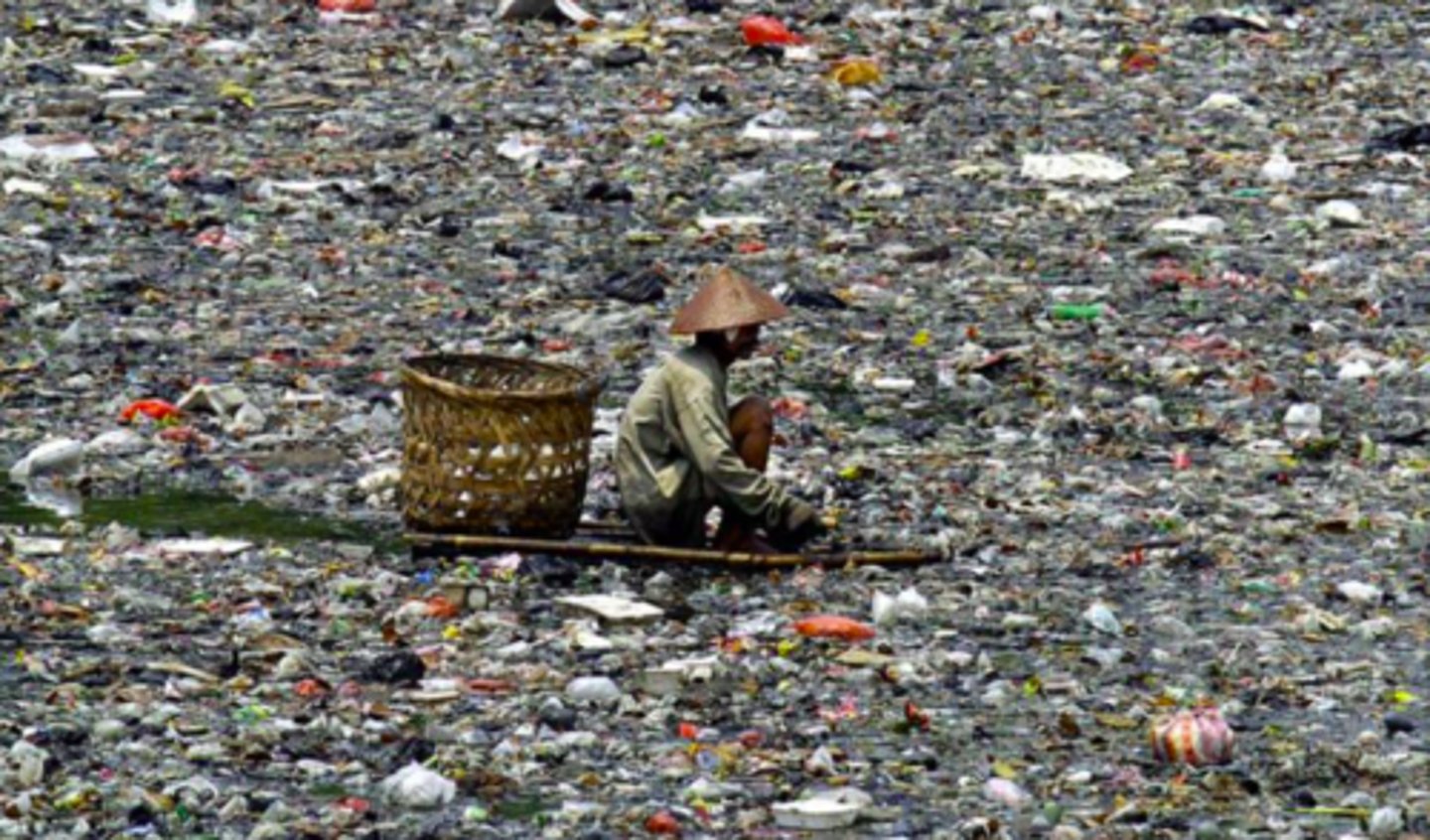Water Pollution
1/30
There's no tags or description
Looks like no tags are added yet.
Name | Mastery | Learn | Test | Matching | Spaced |
|---|
No study sessions yet.
31 Terms
Cuyahoga River
River that in the 1960s carried so much flammable waste that it caught fire.

Clean Water Act (1972)
Establishes and maintains goals and standards for U.S. water quality and purity. It has been amended several times, most prominently in 1987 to increase controls on toxic pollutants, and in 1990, to more effectively address the hazard of oil spills.
Water pollution
any change in water quality that adversely affects living organisms or makes water unsuitable for desired uses
Natural sources of water pollution
Oil seeps, erosion, volcanoes
example: hot springs in Yosemite
Point Sources
discharges pollution from specific locations
example: power plants, drain pipes
Non-point Sources
indirect or diffuse discharge
example(s): agricultural fields, feedlots, golf courses, construction sites, roads
Atmospheric deposition
contaminants transported by wind which makes pollution less predictable and more difficult to monitor, regulate and treat
ex: industrial chemicals in the Great Lakes
Types of water pollutants
1. Infectious agents
2. Oxygen-demanding wastes
3. inorganic wastes
4. Organic chemical wastes
5. Sediment
Infectious agents that contribute to water pollution include
metals, which are highly toxic and tend to bioaccumulate in food chains
True or false: Mercury is the most widespread toxic metal
True
Mine drainage also contributes to:
1. an increase in steam acidity
2. a depletion in oxygen
3. fish death
Yellow Boy Pollution
Pollution that turns the river into a fool's gold color, resulting from a over-concentration of purite (FeS2) being dumped
Flint, Michigan
city where residents were drinking bad water contaminated by old lead pipes
Arsenic poisoning in Bangladesh
1. Arsenic enters through groundwater from rocks
2. Wells brought contaminated water for drinking and cooking
3. Contaminated water used to irrigate crops where plants, especially rice, absorb it
Organic Chemical wastes that contribute to water pollution include:
chemicals used to make pesticides, plastics, pharmaceuticals, pigments, and many other day-to-day chemicals
How do pharmaceuticals get into our drinking water?
1. Excretion
2. Disposal (main source): unused drugs should be bought to a collect site OR mixed with coffee grounds
True or false: Contraceptive pills, ibuprofen and prozac don't get removed by waste treatment plants
True
True or False: Fish in freshwater communities are developing sexual deformities due to hormones in waste treatment
True
How is water getting polluted via sediment?
Human activities have accelerated erosion rates and have obstructed shipping channels, clogs, hydroelectric turbines, smothering fish eggs, blocking out light needed for photosynthesis
Sediment building can also be beneficial
in building coastal wetlands and nourishing flood plain fields
True or false: Drinking bottled water is better than drinking tap water
False
True or False: Louisiana has some of the worst water pollution in the US
True
ex: Exxon Mobil Refinery in Baton Rouge is one of the TOP contributors to water pollutants, exempt from meeting 1976 pollution prevention requirements
Example of polluted body of water in the Southern US
Lake Maurepas in Lower Mississippi is highly contaminated due to nearby oil refinery
Bayou Bonfouca
former superfund site due to contamination from abandoned creosote facility
Lake Karachay, Russia
world's most polluted waterbody in 1960, site of former nuclear facility
-vats exploded in 1957 so they pumped the waste into nearby lakes which eventually dried up, leaving contaminates to be blown by wind all around

Results of Lake Karachay's Pollution
41% increase in leukemia
40% increase in cognitive disabilities
29% increase in cancer
Citarum River, Indonesia
Worst polluted river

Great Pacific Garbage Patch
patch of solid waste the size of Texas floating in the currents of the North Pacific gyre, mostly consisting of plastics.
True or False: Most of the debris in the Gulf of Mexico is textiles, plastic beads, and irregular plastics such as water bottles
True
Which uninhabited island in the South Pacific has been described as having the highest density of plastic waste in the world?
Henderson Island

True or False: Orleans Parish recycled 3% of all trash at the curb.
True